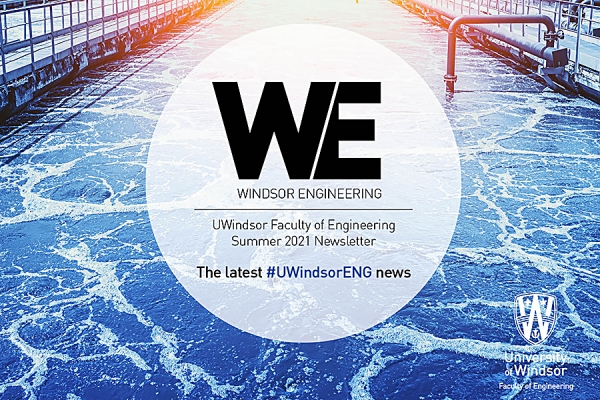 The Windsor Engineering summer newsletter highlights research and activities by faculty and students.
The Windsor Engineering summer newsletter highlights research and activities by faculty and students.
Plastic pollution in the Great Lakes has been widely acknowledged, says environmental engineering professor Tirupati Bolisetti, but microplastics hidden in the water are posing a much bigger problem for aquatic and human life.
Microplastics are particles that measuring 5 mm or smaller. They find their way into natural waters due to improper disposal of plastics, which degrade into small pieces.
“They come from plastic packaging, cosmetics, textiles, automotive components, and plastic litter thrown on the beaches, to name a few,” says Dr. Bolisetti.
A team of interdisciplinary researchers from the University of Windsor, including Bolisetti and Ram Balachandar, is collaborating with Shooka Karimpour and other researchers from York University to understand how microplastics originate and get transported to the western basin of Lake Ontario.
The $493,400 project will see the team conduct field investigations and mathematical modeling studies to understand the dynamics of microplastics in Lake Ontario and its drainage areas, assess the toxicity of microplastics, and look into the impact of variability of their influx on the native and invasive organisms.
Read the full story, “Researchers funded to examine microplastic contamination in the Great Lakes system,” in the latest issue of the Windsor Engineering (WE) newsletter.
The online publication is distributed quarterly to alumni, students, faculty, staff, and industrial and community partners. To automatically receive the newsletter by email, visit the Faculty of Engineering subscription webpage.
